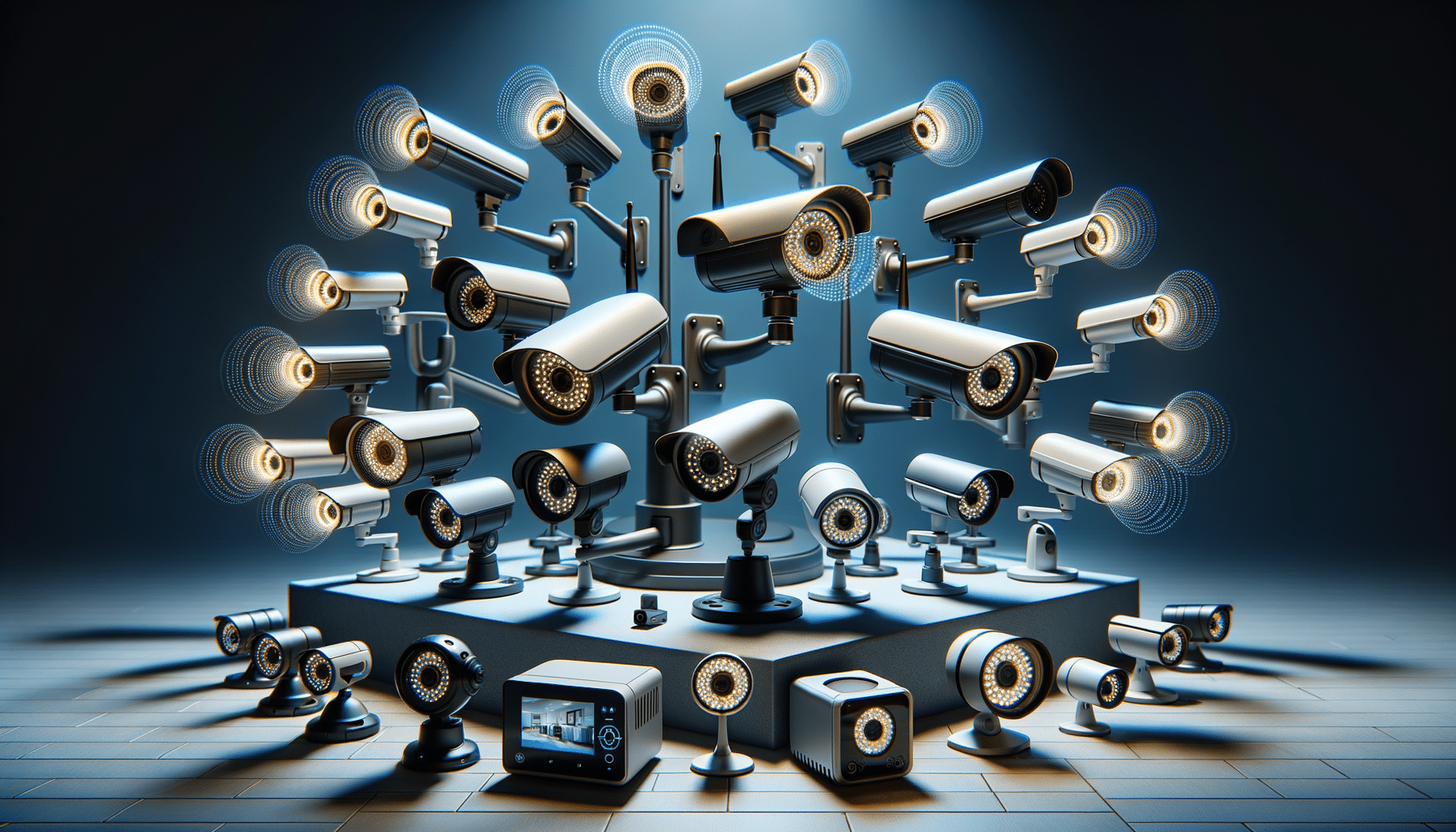
Amazing Home Security Cameras in the U.S
Understanding Home Security Cameras
Home security cameras have become an integral part of modern security systems, offering peace of mind to homeowners. These devices are designed to monitor and record activities in and around your home, providing a visual record of events. Their primary purpose is to deter potential intruders, capture evidence in case of a break-in, and allow homeowners to keep an eye on their property from anywhere.
There are several types of home security cameras, each with unique features and capabilities. Indoor cameras are typically used to monitor the interior of a house, while outdoor cameras are weatherproof and designed to withstand the elements. Additionally, there are wired and wireless options, with wireless cameras offering more flexibility in installation and placement.
Modern security cameras often come equipped with advanced features such as night vision, motion detection, and high-definition video quality. Some even offer two-way audio, allowing homeowners to communicate with visitors or potential intruders. These features make security cameras not only a tool for surveillance but also a means of interaction.
Moreover, the integration of smart technology has revolutionized home security cameras. Many systems now offer connectivity with smartphones and other smart devices, enabling real-time alerts and remote access to live video feeds. This technology empowers homeowners to monitor their property from anywhere in the world, enhancing the overall security of their homes.
How to View a Security Camera From Anywhere
One of the most appealing aspects of modern security cameras is the ability to view footage from anywhere. This feature is particularly useful for homeowners who travel frequently or want to keep an eye on their property while at work. To achieve this level of accessibility, security cameras need to be connected to the internet, typically through a Wi-Fi network.
Most security cameras come with a dedicated mobile app or software that allows users to access live feeds and recorded footage remotely. By logging into the app, homeowners can view their cameras in real time, receive notifications of any detected motion, and even control camera settings. This capability transforms the way we interact with our security systems, providing unparalleled convenience and control.
To set up remote viewing, ensure that your security camera is properly connected to your home network. This often involves connecting the camera to a Wi-Fi network and linking it to the corresponding app on your smartphone or computer. Once connected, you can access the camera from anywhere with an internet connection.
Security is a major concern when it comes to remote access. To protect your footage and personal information, it’s essential to use strong, unique passwords and enable two-factor authentication if available. Regularly updating the camera’s firmware and app can also help safeguard against potential vulnerabilities.
Key Considerations Before Installing a Security Camera at Home
Before installing a security camera, several key considerations should be taken into account to ensure the system meets your specific needs. First, determine the areas you want to monitor. This will help you decide on the type and number of cameras required. Consider whether you need indoor, outdoor, or a combination of both.
The placement of cameras is crucial for optimal coverage. Cameras should be positioned to cover entry points such as doors and windows, as well as any vulnerable areas around the property. It’s also important to consider the camera’s field of view and ensure it is not obstructed by walls, furniture, or other objects.
Another important factor is the camera’s connectivity. Decide whether you prefer wired or wireless cameras. Wired cameras generally offer more reliable connections but may require professional installation. Wireless cameras, on the other hand, offer more flexibility but may be subject to interference or connectivity issues.
Additionally, evaluate the features that are important to you. Consider factors such as video resolution, night vision capability, motion detection, and storage options. Some cameras offer cloud storage, while others use local storage such as SD cards.
Finally, consider the overall cost of the system, including the initial purchase price, installation, and any ongoing subscription fees for cloud storage or additional features. By carefully considering these factors, you can select a security camera system that best fits your needs and budget.
Choosing the Right Security Camera for Your Needs
With a variety of security cameras available on the market, choosing the right one can be a daunting task. The first step is to assess your specific security needs. Are you looking to monitor the exterior of your home, or do you need cameras inside as well? The intended use will guide your decision-making process.
Consider the camera’s resolution, as this will affect the clarity of the footage. Higher resolution cameras provide clearer images, which can be crucial in identifying intruders or capturing important details. Additionally, check the camera’s night vision capabilities, as effective low-light performance is essential for 24/7 surveillance.
Another factor to consider is the camera’s field of view. A wider field of view can cover more area, reducing the number of cameras needed. However, ensure that the camera’s placement and angle provide adequate coverage of the desired area.
For those interested in smart home integration, look for cameras that are compatible with your existing smart devices. Many modern cameras offer compatibility with virtual assistants and smart home hubs, allowing for seamless integration and control.
Finally, consider the camera’s durability and weather resistance, especially for outdoor installations. Cameras should be able to withstand various weather conditions without compromising performance.
By carefully evaluating these factors, you can choose a security camera that not only meets your security needs but also complements your lifestyle and home environment.
Maintaining Your Home Security Camera System
Once your security camera system is installed, regular maintenance is essential to ensure its continued effectiveness. Start by conducting routine checks on the cameras to ensure they are functioning properly and capturing clear footage. Clean the camera lenses regularly to prevent dirt or debris from obstructing the view.
It’s also important to test the system’s connectivity and ensure that all cameras are properly linked to your network. Regularly update the camera’s firmware and app to benefit from the latest features and security enhancements. This can help protect your system from potential vulnerabilities and improve overall performance.
Review your camera footage periodically to ensure the system is capturing the desired areas effectively. Adjust camera angles or positions if necessary to enhance coverage. Additionally, check the storage capacity and manage recordings to avoid running out of storage space.
For systems with motion detection features, fine-tune the sensitivity settings to reduce false alarms while ensuring important events are captured. This may require some trial and error to find the optimal balance.
Finally, stay informed about new advancements in security camera technology. Upgrading your system with new features or components can enhance its effectiveness and keep your home secure.
By maintaining your security camera system, you can ensure it continues to provide reliable protection and peace of mind for you and your family.


